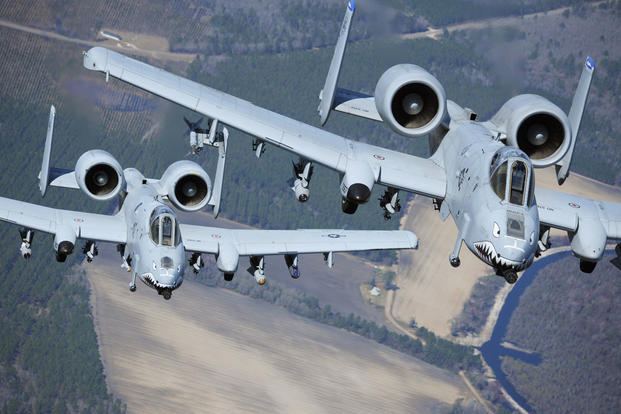The long-range plans of the Air Force and the Pentagon to retire the A-10 Thunderbolt took another hit Thursday from a non-partisan government report questioning Air Force projections on the savings from mothballing the fleet.
The Air Force estimate of $4.2 billion in savings over five years was unreliable and "may overstate or -understate the actual figure," the Government Accountability Office said in a preliminary report to Congress on the decision to retire the fleet.
Air Force leaders have said the service must retire the A-10 due to budget cuts in order to pay for the F-35A Joint Strike Fighter. Air Force Chief of Staff Gen. Mark Welsh has told Congress the A-10 is not flexible enough and the service can depend on a mix of other aircraft like the B-1, F-16 and F-15 to fulfill the close air support mission.
Related Video
The report, which was released Thursday, questioned the methods used by the Air Force to determine that retiring the A-10 and giving its close air support mission to other aircraft was cost efficient and would not detract from the vital role of protecting ground troops. Congress has continued to fund the A-10 with annual appropriations over the objections of the Air Force and the Defense Department.
Congress asked the GAO last year to study the Air Force's decision to retire the A-10. Findings throughout the report question and outright reject the service's case to send the revered close air support aircraft to the boneyard.
Cost Savings Questioned
In its report, the GAO found that "the Air Force has not fully assessed the cost savings associated with A-10 divestment or its alternatives."
"For example, A-10 divestment could increase the operational tempo of remaining CAS-capable aircraft, which could increase costs related to extending the service lives of those remaining CAS-capable aircraft," the GAO said. "To the extent that this occurs, it would reduce the actual savings from the A-10 divestiture below the estimated $4.2 billion."
On the other hand, the GAO said that savings "could be greater than $4.2 billion because the Air Force estimate did not include the costs for things such as software upgrades or potential structural enhancements that it could incur if it were to keep the A-10."
"Without a reliable cost estimate, the Air Force does not have a complete picture of the savings it would generate by divesting the A-10 and does not have a reliable basis from which to develop and consider alternatives to achieve budget targets," the GAO said.
The report stopped short of making recommendations, pending a more detailed GAO assessment and report to Congress later this year on the issues surrounding the potential retirement of the A-10 fleet.
In its written response to the report, the Air Force "did not take issue with information in the report but believed that we did not fully assess the potential risks to air superiority and global strike that could be created by the added cost of retaining the A-10 fleet," according to the GAO .
Responding for the Air Force and the Defense Department, Air Force Secretary Deborah Lee James wrote: "Each of the Combatant Commanders supports fielding advanced warfighting capabilities and would rather cut the A-10 when compared to higher priority mission areas."
Last week, the Senate by a vote of 71-25 approved the National Defense Authorization Act including funding for the A-10 for another year. President Obama has threatened to veto the bill.
-- Richard Sisk can be reached at richard.sisk@military.com






























